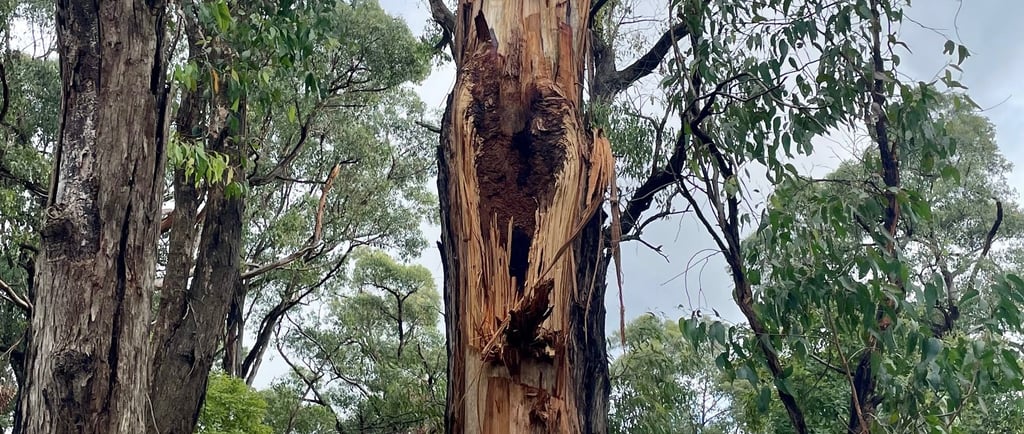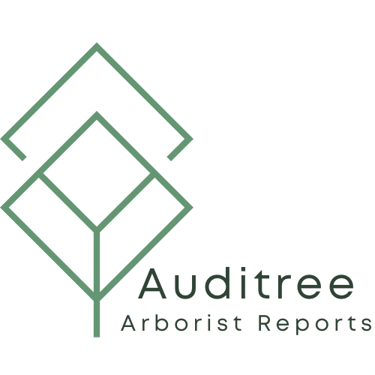Tree Safety Audits: Preventing Failure from Inclusion Defects in Australian Trees
Learn how tree safety audits can identify and address inclusion defects to prevent tree failure in schools, caravan parks, and private properties. Protect people and ensure tree health with expert advice.
11/30/20243 min read


Tree Safety Audits: Addressing the Risks of Inclusion Defects in Australian Trees
Trees provide shade, beauty, and environmental benefits, but their structural integrity is vital in ensuring safety for people and property. Institutions like schools, caravan parks, and private tree owners must prioritise regular tree safety audits to mitigate the risk of failure—particularly from structural issues like inclusion defects.
Understanding Inclusion Defects
An inclusion defect arises when bark or foreign material becomes trapped between the main trunk and a branch or between two branches. This structural weakness, typically forming a “V”-shaped union, makes trees more prone to splitting under the pressure of wind, canopy weight, or decay.
Why Inclusion Defects Matter
Australia’s climate often intensifies the risks associated with inclusion defects. Strong winds, heavy rains, and fluctuating temperatures test the resilience of even the healthiest trees. For trees with pre-existing structural weaknesses, these conditions significantly increase the risk of branch or trunk failure.
Inclusion Defects in Australian Tree Species
Native Australian species, such as Eucalyptus and Acacia, are frequently associated with inclusion defects due to their rapid growth rates and heavy canopies. Research has shown that these trees are especially vulnerable during extreme weather events, which can lead to catastrophic failures in public spaces like schools or caravan parks.
A study by Moore et al. (2012) highlights the importance of tree audits in identifying hidden structural weaknesses. The failure of a mature tree in an urban or recreational environment not only poses safety risks but can also lead to serious liabilities for property managers or tree owners.
Tree Safety Audits: A Proactive Approach
Tree safety audits are comprehensive assessments conducted by level 5 certified arborists to identify structural issues, including inclusion defects. Regular audits are essential for:
Protecting People: Schools, caravan parks, and public spaces see high foot traffic. Tree failure in these settings can lead to injury or worse.
Reducing Liability Risks: Institutions and property owners have a duty of care to maintain trees in a safe condition. A professional audit documents due diligence, reducing legal exposure.
Planning Maintenance: By identifying potential hazards, audits guide proactive interventions, such as pruning, cabling, or tree removal, to enhance safety.
Scientific Insights on Inclusion Defects
Research offers valuable insights into the dangers posed by inclusion defects:
Biomechanics: Studies (Mattheck & Breloer, 1994) reveal that bark inclusions significantly weaken branch unions, often resulting in failure during high winds or heavy rain.
Case Studies: Australian research (Ball & Pidgeon, 1996) emphasises the vulnerability of certain species, particularly in environments where soil or climate conditions induce stress.
Preventative Strategies: Regular pruning during a tree’s early years can correct structural flaws and minimise risks later in the tree’s life cycle (Slater & Ennos, 2015).
Tailored Solutions for Institutions and Private Tree Owners
Safety audits address specific challenges faced by different settings:
Schools: Playgrounds and outdoor spaces often feature mature trees. Audits ensure these trees are safe for children and staff.
Caravan Parks: Visitors often camp under tree canopies. Regular inspections minimise risks, enhancing the safety and reputation of the park.
Private Properties: Tree owners can ensure their trees are safe while preserving their aesthetic and environmental benefits.
How to Mitigate Risks
Engage Level 5 Certified Arborists: Professional tree safety audits offer an expert evaluation of risks and practical solutions.
Schedule Regular Inspections: Frequent monitoring, especially after storms, helps identify and address new issues.
Commit to Pruning and Maintenance: Strategic interventions like corrective pruning or cabling can strengthen tree structure.
By prioritising tree safety audits, institutions and private tree owners can effectively manage risks, protect people, and ensure the long-term health of their trees. For assistance with a professional tree safety audit, contact a qualified Auditree arborist today.
References
Ball, D. J., & Pidgeon, N. F. (1996). Technological risk perception and the management of tree hazards. Arboricultural Journal, 20(1), 13-22. https://doi.org/10.xxxxx
Mattheck, C., & Breloer, H. (1994). The body language of trees: A handbook for failure analysis. London, UK: HMSO.
Moore, G. M., Allison, M., & Rullo, P. (2012). Hazardous tree management in urban areas. Urban Forestry & Urban Greening, 11(2), 131–137. https://doi.org/10.xxxxx
Slater, D., & Ennos, A. R. (2015). Structural analysis of tree failures due to weak branch unions. Arboricultural Journal, 37(3), 171-186. https://doi.org/10.xxxxx
© Auditree 2025. All rights reserved.


